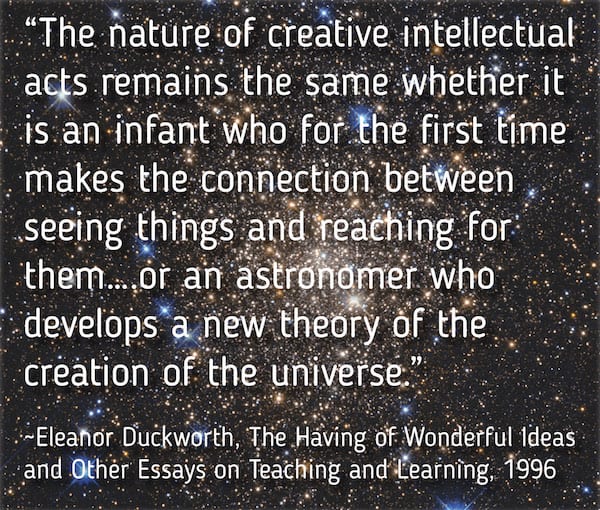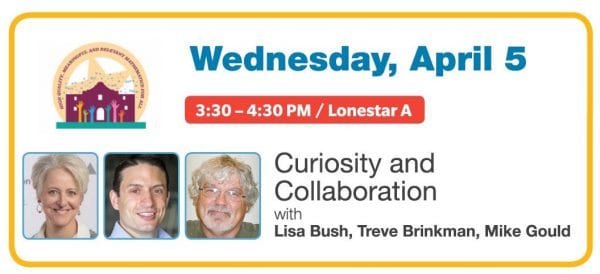Curiosity and Collaboration: An Interview with Mike Gould & Treve Brinkman
by April 04th, 2017
 All Blog Posts
All Blog Posts
Curiosity, collaboration, and divergent problems. How are they all connected, and why are they so important in the math classroom? I explore these questions with Treve Brinkman and Mike Gould in advance of our NCSM session on Wednesday, April 5th.
What is a divergent problem?
Treve: A divergent problem is one that connects with all types of learners in the sense that it strikes up curiosity, allows for collaboration, and has multiple access points.
Mike: Almost anything can be divergent. It’s how you compose it and ask it.
What is the value in a divergent problem?
Treve: The value in having a divergent problem is that it engages all types of learners, including learners who struggle with mathematics.
What are the characteristics of struggling learners and how do you stay mindful of their struggles in the classroom?
Mike: We’re looking at students on both sides of the bell. For students who are struggling with mathematics, the divergent problem gives them an entry point. There are also students who need divergent problems to keep their mind alert and understand the depth of the mathematics in the task.
Could you describe the control that the teacher has in the three attributes of curiosity, collaboration, and divergence?
Mike: First, curiosity is something the child has to come to us with. Actually our purposeful planning can take care of not only the divergency but the collaboration. Within the structure of what we’re doing, the curiosity will come out of the task as well. All three are really in the control of the teacher.
Treve: Some of the curiosity comes from the students. I think we have the control to squelch curiosity. I know we have that capability. On the other hand, we do have the opportunity to at least open the door for curiosity. Whether students walk through or not is their decision. {Pull quote: “We do have the opportunity to at least open the door for curiosity. Whether students walk through or not is their decision.”}
How do divergent problems lend themselves to seemingly basic questions?
Mike: I think about the simple process of “add 1, add 2, subtract 1, subtract 2” and how people try not to put any value on that. Yet if you ask them to give you any two-digit number in the world, for example 54, they can see that’s 1 less than a group of 5. Another example, 23, is 2 less than a group of 5. Even though it’s a fairly simple question, it starts to make people realize that our number system, though it’s on base 10, allows us to have access to all numbers if we can relate it in terms of “1 more, 2 more, 1 less, 2 less”. It really helps when you’re composing and decomposing,
Are there any parting thoughts you’d like to share as educators begin to think about divergent problems and curiosity and collaboration?
Mike: I love this quote from Eleanor Duckworth:
“The nature of creative intellectual acts remains the same whether it is an infant who for the first time makes the connection between seeing things and reaching for them….or an astronomer who develops a new theory of the creation of the universe.”
~Eleanor Duckworth, The Having of Wonderful Ideas and Other Essays on Teaching and Learning, 1996

Mike: This quote goes back to our struggling student. A divergent task allows the person who is figuring out the relationship between 2+2 and the person who’s deriving calculus.
Share with us in the comments any ideas that you’ve seen spark students’ curiosity in your classroom.
To further this conversation and uncover how to allow students to follow their curiosity while achieving a certain outcome mathematically, please join us for our NCSM session next Wednesday, April 5th.

Curiosity and Collaboration: The Power of Divergent Problems
NCSM Annual, San Antonio, TX
Wednesday, April 5th
3:30-4:30 PM
Speakers: Lisa Bush, Treve Brinkman, Michael Gould
Location: LONE STAR A | SESSION 3616
Curiosity is a basic human drive. How do we tap into our naturally curious nature in mathematics classrooms? Join us to explore the power of divergent problems and the curiosity they can generate in a diverse group of students.


Comments